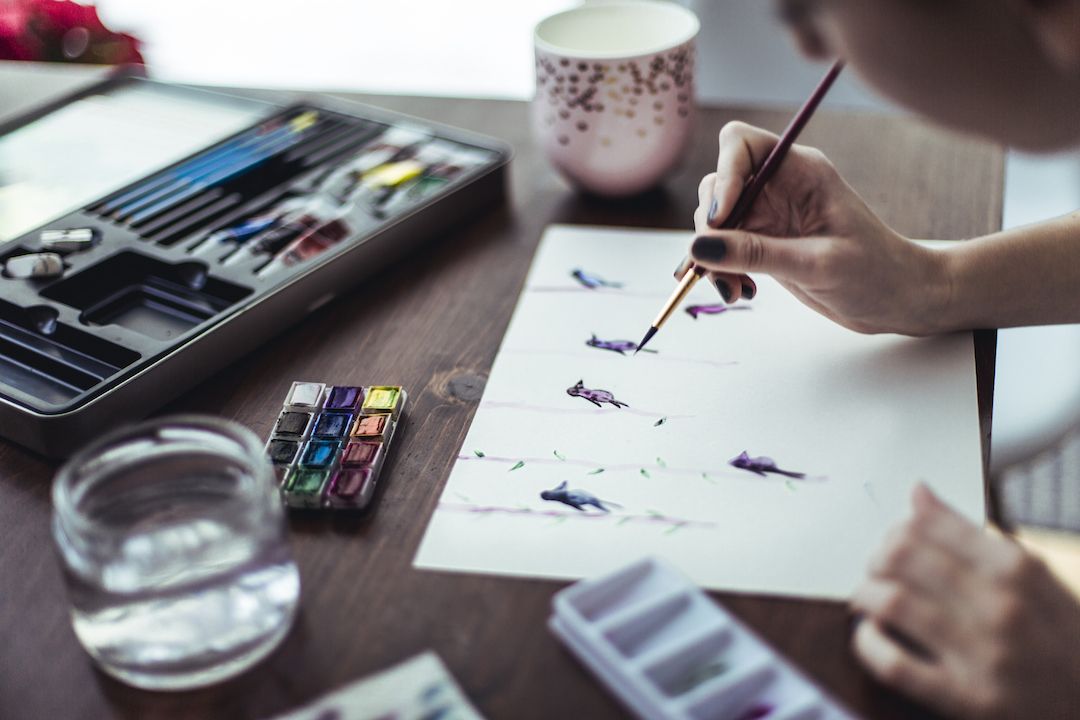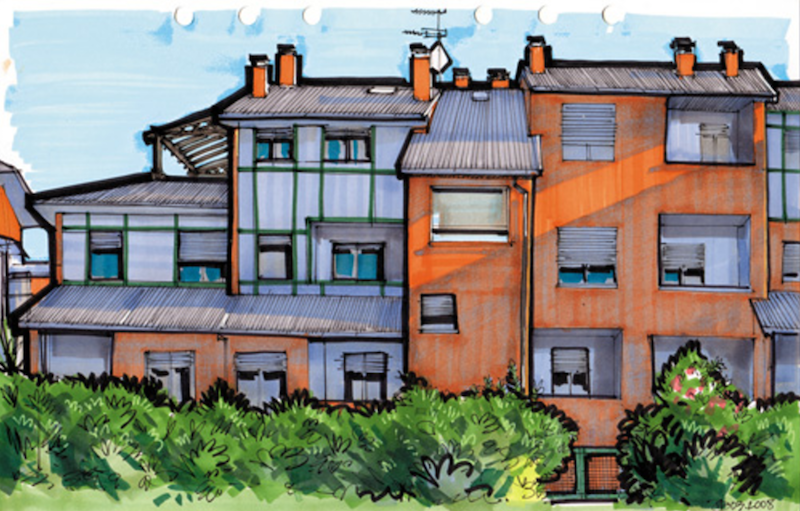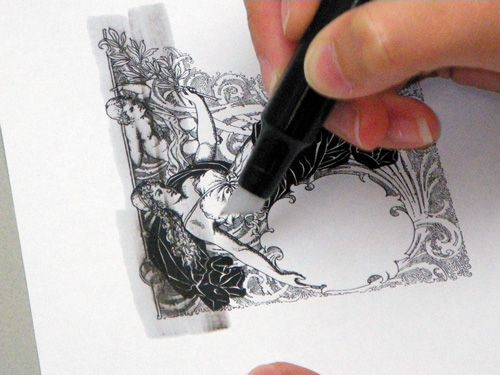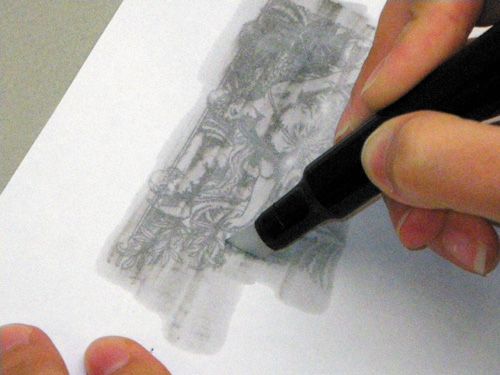Things To Draw With Markers Easy

Learn to Draw with Markers and Ink like a Pro
Drawing with markers offers almost instant gratification—markers are simple to use, require little prep time and dry quickly. Because the marking material is fluid, the smooth marks are unlike those made by dry drawing mediums.
Drawing with markers will offer you a range of brilliant color that surely will excite your creativity. They're ideal for creating loose lines, calligraphic designs and precise technical illustrations.
One drawback to using them is that it's not easy to correct mistakes. To work successfully, you need a bit of confidence and some drawing experience.
The many different types of markers go by various names, such as art markers, marker pens, artist pens, brush pens and paint markers. Art pens and markers come in every color you can imagine and can be purchased in sets to save money. They vary in size and tip shape and are further distinguished by their colorant, which can be dye, ink or paint, and alcohol-, water- or solvent-based.

Different Types of Markers
When learning how to draw with markers, it's important to consider the different types. Three common kinds of markers are listed below: alcohol-based, water-based and solvent-based. Knowing the different qualities of each will help you choose which markers are best for your drawing needs.
Alcohol-Based
These markers are fast-drying and waterproof. They don't smell as strong as solvent-based brands, but they can still cause eye or respiratory irritation. Make sure your workspace is well ventilated.
Because alcohol-based markers dry quickly, the paper you work on doesn't stay wet and is less likely to be torn as you layer colors. Popular brands among artists and designers include Prismacolor, Letraset Tria and Copic, whose pens are refillable. Sharpies, the all-purpose permanent markers, are also alcohol-based.
 Water-Based
Water-Based
Because they are odorless and safe to use, water-based markers are the best choice for children. But adults can obviously make good use of them, too.
Some have brush tips made of foam or dense fiber. Others are chisel-shaped or have nylon brush tips that distribute the color.
Water-based paint markers, such as Sakura Permapaque markers, are opaque, generally quick-drying and water-resistant when dry.
Most brush pens and markers are water-based and have flexible nylon or foam tips shaped like traditional brushes. They make marks similar to small round bristle brushes and have a similar feel in the hand.
Many brush markers are double-ended, with a fine point on one end and a wider tip on the other. Brush pens and markers often use acid-free ink, which is ideal for calligraphic work, art journals and book arts. Try Staedtler Marsgraphic 3000 Duo, Pitt Artist Pens, Pentel Brush Pens or Marvy Brush Markers.
Solvent-Based
This type of marker creates brilliant color and is waterproof and long-lasting. A popular solvent-based brand for design and drawing is Chartpak Ad markers, whose solvent is xylene.
The solvents in markers can be xylene, methyl isobutyl ketone or butyl acetate, all of which can cause dizziness, headaches and nausea. Markers with these solvents should be used only in studios with excellent ventilation. Solvent-based markers aren't suitable for children.
Many paint markers are solvent-based and opaque. You can use paint markers on porous and nonporous surfaces. They're generally waterproof, but not necessarily permanent.
Paint markers are most useful for craft or decorative projects and signage. Shake them to mix the paint inside, and ensure your workspace has proper ventilation. This marker type, which come in many colors including metallics, can be blended with Turpenoid or other solvents.
Using Dip Pens

Long before markers hit art store shelves, artists drew with pen and ink. Dip pens have been made from reeds or quills since ancient times. The simplest is a Japanese hand-carved bamboo pen that has its shaft shaped into a tip that can be dipped into a pot of ink.
A bit more refined is a pen with an interchangeable metal nib held in a simple wooden or plastic handle. Drawing nibs are pointed metal tips that are somewhat flexible so the lines produced are thicker or thinner depending on the pressure of the hand.
Similar nibs are also available in pens that hold a reservoir of ink inside the handle, like a fountain pen, obviating the need to dip the pen into a pot of ink. The reservoir can be a disposable or refillable cartridge.

Mechanical pens have a metal, needle-like tip instead of a nib and produce a controlled line of predetermined width from 0.13 to 1.4 millimeters. Mechanical pens can be used for precise drafting and technical work or for sketching, although the unchanging width can become monotonous.
Black India ink is pigment-based ink that is permanent, lightfast and waterproof. Colored inks are acrylic- or shellac-based and can be thinned with water. Some colored inks aren't lightfast and shouldn't be exposed to direct sunlight for long periods.
3 Easy Ways to Improve Your Drawings
Now that we have covered the basics, here are three easy tips for drawing with markers and ink.
- Line and wash: First do a line drawing in pen or ink. When it's dry, add light washes with markers, watercolor or brush and ink. If the initial drawing is done in water-soluble ink, the wash will soften the ink lines, creating an interesting fusion of line and tone.
- Layering: Markers lend themselves perfectly to blending and layering color. Start with the lightest colors, building up rich layers of color and texture. Colorless blenders, such as those from Prismacolor and Chartpak, can be used to soften edges and combine colors.
- Combining media: Watercolor brush markers can be blended and lightened with a brush dipped in water or can be used in combination with traditional watercolor
techniques.
Try Transferring an Image
Another great drawing technique is to use solvent-based colorless blenders to transfer laser-printed images to paper. Run a wide tip colorless blender over the area of the image you want to transfer.

Flip the paper over onto the surface you want to mark, and run the blender over the image area on the back side.

The printed image, to which you can add color, will appear in reverse on the surface.

Learn more image transfer tips here.
Sign up for the ArtistsNetwork newsletter by entering your email below, and you'll get a free, instant download with tons of drawing tips and techniques for beginners!
[fw-capture-inline campaign="RCLP-confirmation-step-by-step-drawings" thanks="Thanks for downloading!" interest="Art" offer="http://media2.fwpublications.com/NLS/ARNfreemiums/ArtistsNetwork_StepByStepDrawingforBeginners_2015.pdf"]
FAQs for Drawing with Markers and Ink
Whether you're new to drawing or just new to drawing with markers and ink, here are the answers to commonly asked questions.
Are art markers permanent and lightfast?
Art markers were originally developed for design and illustration work that only had to retain its color long enough for the artist to make a presentation or reproduce the work for printing. The dyes weren't lightfast and would fade, some relatively quickly, when exposed to light.
Markers today are more permanent, but this varies by manufacturer. Check the product literature to see how permanent the marker are. And, to ensure the longevity of your art, take a picture of your work as soon as it's completed.
At this time, there are no American Society for Testing and Materials for Artists' Materials (ASTM) lightfastness or permanence testing standards for markers. If a marker is described as "permanent," it means you can't wash the marks off—not that the mark will never fade.
What are good surfaces for marker work?
Fine art papers, bristol board and illustration board are all good surfaces for marker artwork. A smooth, cold-pressed surface resists the bleeding that can occur with markers.
Bristol board is heavier than drawing paper, but lighter than illustration board. It comes in two finishes: plate (hot-pressed), which is slick and hard; and vellum (cold-pressed), which is softer and has more tooth. Illustration board has only one working surface, which comes in hot- or cold-pressed.
Several manufacturers make paper specifically for markers. This paper is bleed-proof and retains the true colors of the markers. Some examples are Canson Pro-Layout and Bienfang 360.
Can you work with multiple brands of markers at a time?
It's best to stick with one brand through a whole piece. Each marker line has a unique chemical formula, so blending brands may lead to unsatisfactory results.
Is India ink really from India?
India ink was first used in Asia during the 4th century B.C. and was made from soot and burnt bone. Colonists later introduced it to Europe. Formulas today generally use shellac.
This article is written by Greg Albert and first appeared in a past issue of Artists Magazine.
With the right materials, techniques, and information in hand, you are well on your way to drawing with markers and ink like a pro. Be sure to share your favorite drawing materials, advice and techniques in the comments. Happy drawing, artists!
Things To Draw With Markers Easy
Source: https://www.artistsnetwork.com/art-techniques/learning-how-to-draw-with-markers-and-ink/
Posted by: phillipsounins85.blogspot.com

0 Response to "Things To Draw With Markers Easy"
Post a Comment